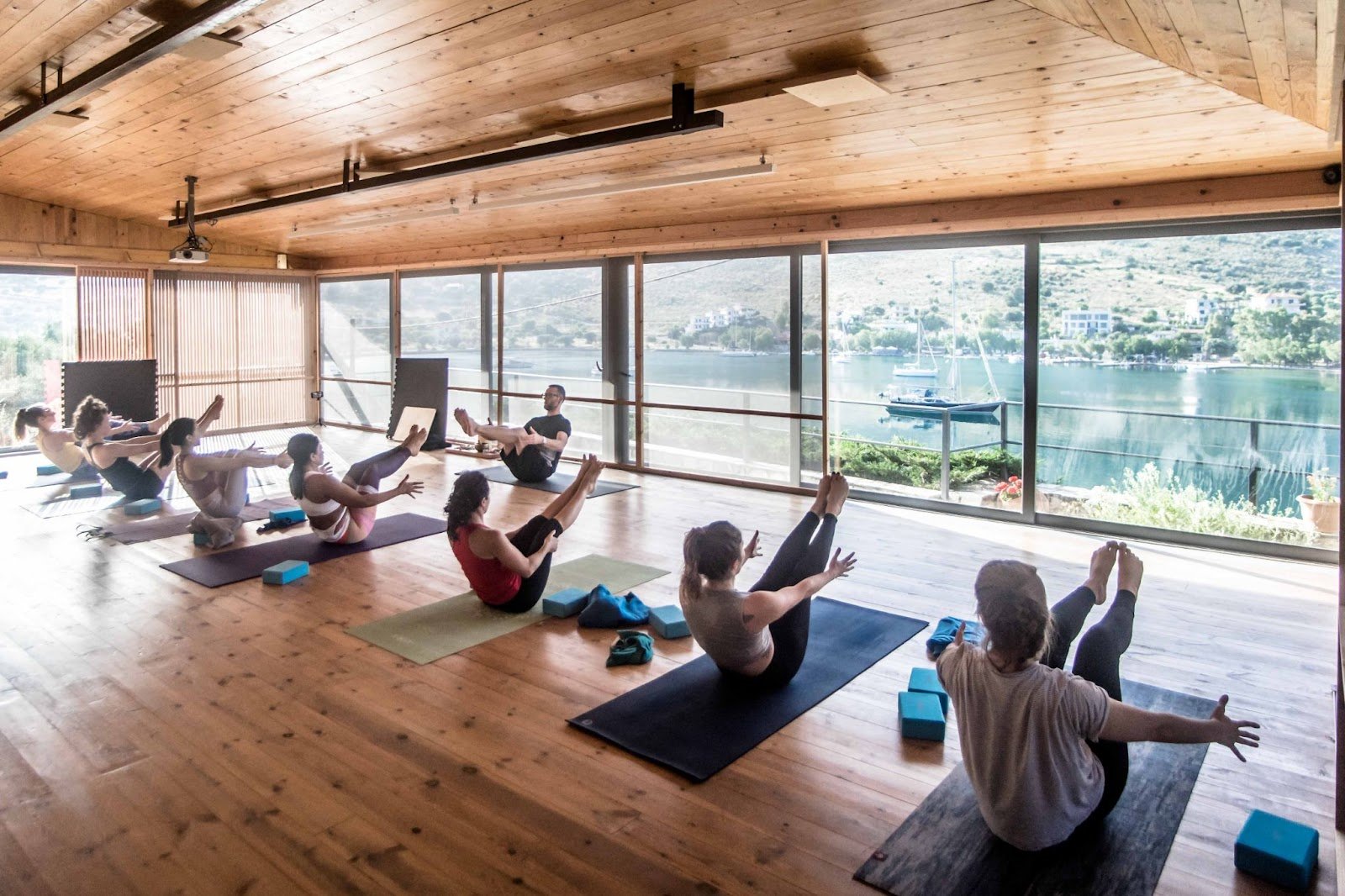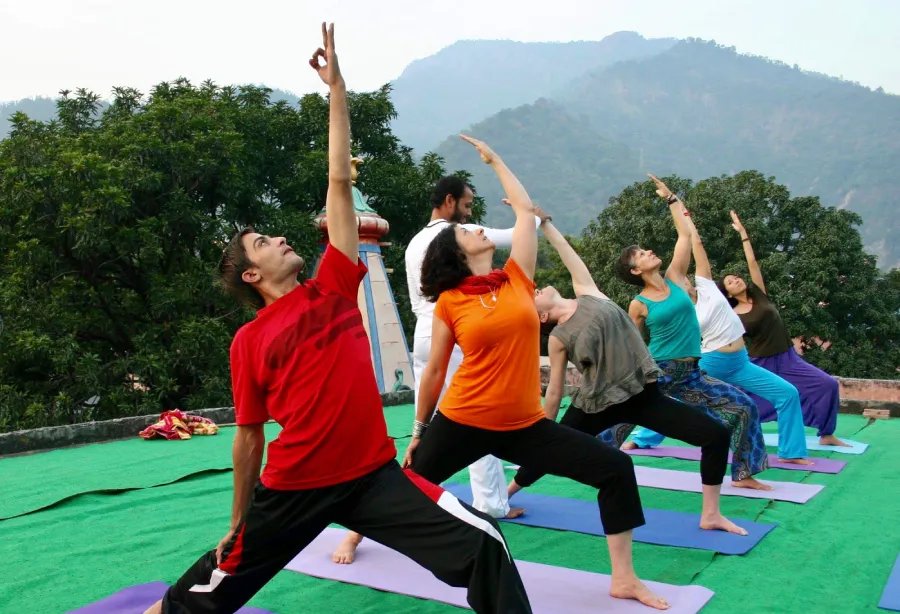If you’ve been to any bigger Yoga studio recently, you probably know that there’s more than one style of Yoga to choose from. However, you might have noticed the names Hatha and Ashtanga Vinyasa Yoga appearing more often than others and wonder what they are and how they differ.
In this post, we have put together the most important differences (and similarities) between Hatha and Ashtanga Vinyasa Yoga so that you’ll be absolutely clear about what you’re getting yourself into when you book your next class!
Hatha Yoga
Often referred to as the “mother of all Yoga styles”, Hatha Yoga is a practice based on Asana (postures), Pranayama (breathwork), Mudras (energetic gestures), Bandhas (energy locks), and Shatkarma (internal cleansing).
Hatha Yoga is suitable for anyone looking for a gentle practice, especially beginners who might want to focus a little longer on each posture to get a feel for it. The practice on the mat itself is slow-paced and rather gentle, emphasizing the single postures, which are held for several breaths in steadiness after the initial warm-up with Classical Sun Salutations.
The basic principle of the opposing energies, “Ha” (Sun) and “Tha” (Moon), is reflected in the seeking of balance within the posture itself, of the feminine and the masculine energy, and between the energizing yet relaxing aspect of it.
The sequencing in Hatha Yoga is traditionally done in a posture-by-posture, left-right-left-right way, without too much attention to the transitions in between, unlike Ashtanga or Vinyasa Yoga. The breath plays a vital role in Hatha Yoga, as it is used to move Prana (life energy) within the body in a meditative way.
Join: Yoga Teacher Training in Rishikesh
Ashtanga Vinyasa Yoga
Sharing many of the characteristics of Hatha Yoga, like many of the distinct postures and the importance of breath and bandhas, Ashtanga Vinyasa Yoga is a much more dynamic practice.
Being rooted in the eight limbs of Yoga after Patanjali (“ashta” =eight, “anga” =limb), Ashtanga Vinyasa refers to the physical asana practice. It was translated into six set sequences by Pattabhi Jois that are traditionally worked through in a hierarchical manner, increasing in difficulty. The ones that are most often taught nowadays are the Primary and Intermediate Series.
The series themselves are a sophisticated system designed to strengthen and open the body consecutively. The intention behind it is to be practiced regularly, if not daily, and, by repetition, develop a finer awareness for the asanas, muscle memory, stamina for the body, and discipline for the mind.
Other than in Hatha Yoga, Ashtanga Vinyasa is practiced in a one-breath-one-movement pattern that trains the practitioner to synchronize their breath with the movement while moving steadily through the transitions.
It is a challenging practice that first builds up heat in the body by moving through sets of Sun Salutations. Then, strategically, it works into the strength aspects of the standing postures before moving to the more complex stretches of the seating postures, and finally, it ends with backbends, inversions, and Savasana.
Instead of being meditative in calmness, like in Hatha Yoga, Ashtanga Vinyasa Yoga aims for meditation in movement. An important element for this is the concept of “Trishtana”, a combination of the three elements of Ashtanga:
breath (specifically, Ujjayi breath)
the Vinyasa
the gazing point or the focus (“Drishti)
These 3 elements together help to purify the body, the nervous system, and the mind.
Another big difference between Hatha and Ashtanga Vinyasa Yoga is that Ashtanga can also be practiced more traditionally, the so-called “Mysore-style.” Instead of a teacher-led practice with step-by-step instructions, students share the space with others to practice together but practice the sequence at their own pace, at their own breath. The teacher is present to offer adjustments and teach the individual practitioners the next postures when ready.
This aspect of agency for the practitioner and the great amount of detail with which it is practiced makes Ashtanga Vinyasa Yoga ideal for anyone seeking an intermediate, reliable Yoga style that promotes progress, growth, and consistency.
Now, to the big question in the room – Which one is better?
The simple answer is: it depends. If you are looking for a gentle practice to balance your energy while getting to know your body better, Hatha might be a good choice.
However, if you are looking for a more dynamic form of Yoga that builds up a bit of sweat and energizes you while working out the whole body, you might want to try out Ashtanga Vinyasa Yoga. There are many good schools out there that can offer you a good insight into the practice.
If you want to fully immerse yourself in this transformative practice and explore a modern approach to Vinyasa and Ashtanga, check out this 200-hour Yoga Teacher Training in sunny Greece!




